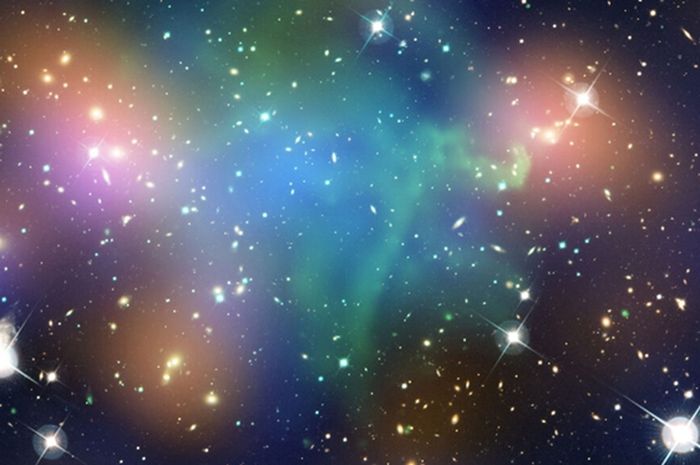NASA, ESA, CFHT, CXO, MJ Jee / University of California Davis, A. Mahdavi / San Francisco State University
–
The hot gas in the galaxy cluster appears green in this image of the Abell 520 cluster taken by many telescopes. This cluster is about 2.4 billion light years away. A new study shows hot gases like this are getting hotter as the universe ages.
–
Nationalgeographic.co.id—Study published October 12, 2022 in Astrophysical Journal title The Cosmic Thermal History Probed by Sunyaev–Zeldovich Effect Tomography, has investigated the thermal history of the universe over the last 10 billion years. It was found that the average temperature of gases throughout the universe had increased more than 10-fold over that time period and reached about 2 million degrees Kelvin today, or about 4 million degrees Fahrenheit.
“Our new measurements provide direct confirmation of the important work by Jim Peebles, the 2019 Nobel Laureate in Physics, who has developed a theory about how large-scale structures formed in the universe,” said Dr. Yi-Kuan Chianglead study author and research associate at The Ohio State University Center for Cosmology and AstroParticle Physics.
The large-scale structure of the universe refers to the global pattern of galaxies and galaxy clusters on a scale beyond individual galaxies. It was formed by the gravitational collapse of dark matter and gas.
“As the universe evolved, gravity pulled the dark matter and gas in space together into galaxies and clusters of galaxies,” Chiang said, as reported. Tech Explorist. “The tug is so strong that more and more gas is electrocuted and heated up.” he added. The findings, Chiang said, show scientists how to track the progress of cosmic structure formation by “checking the temperature” of the universe.
The researchers used a new method that allowed them to estimate the temperature of gases farther from Earth, meaning farther back in time. Then they would compare it to gases closer to Earth at this point. As a result, researchers have confirmed that the universe is getting hotter over time due to the gravitational collapse of cosmic structures, and that warming is likely to continue.

ESA, Planck Collaboration
–
This image is a sky map of the cosmic microwave background, that is, ancient light from a little after the Big Bang. The red spots come from distant areas that are only slightly warmer than the blue spots.
–
To understand how the temperature of the universe has changed over time, the researchers also used space-wide light data collected by two missions, the Planck and Sloan Digital Sky Survey. Planck is a European Space Agency mission operating with major involvement from NASA, while Sloan collects detailed images and light spectra of the universe. Both missions have provided important data for researchers.
They combined data from the two missions and evaluated the distances of hot gas near and far through measurements of redshift, the idea used to estimate the cosmic age at which distant objects are observed.
“Redshift” gets its name from the way light wavelengths are elongated. The further away something is in the universe, the longer the wavelength of light. Scientists who study the cosmos call this the elongation of the redshift effect.
Also Read: Astronomers find strange signal coming from the center of the Milky Way Galaxy
Also Read: How Does the Human Brain Know About the Whole Universe?
Also Read: Brian Skerry: We Still Don’t Know Much About This Planet
This redshift concept works because the light we see from objects farther away from Earth is older than the light we see from objects closer to Earth, where light from distant objects has traveled a longer distance to reach us. That fact, along with the method for estimating temperature of light, allowing the researchers to measure the average temperature of the gas at universe initial, i.e. gas surrounding a more distant object, then comparing that average to the average temperature of gases closer to Earth, or gases today.
The gases in the universe today, as researchers have discovered, reach temperatures of about 2 million degrees Kelvin, or about 4 million degrees Fahrenheit, around objects closer to Earth. That’s about 10 times the temperature of the gas around objects that are farther away and further into the past.
“The universe is heating up due to the natural processes of galaxies and the formation of structures. It is not related to warming on Earth. This phenomenon occurs on a very different scale. They are completely unconnected,” Chiang said.
PROMOTED CONTENT
Featured Videos
–


